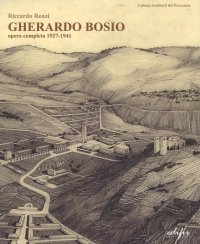Gio. Benedetto Castiglione Genovese. Il Grechetto a Roma. Committenza e opere
Edited by Orlando Anna and Francesco Rotatori.
Genova, 2023; paperback, pp. 304, col. ill., cm 23x29.
cover price: € 150.00
|
Books included in the offer:
Gio. Benedetto Castiglione Genovese. Il Grechetto a Roma. Committenza e opere
Edited by Orlando Anna and Francesco Rotatori.
Genova, 2023; paperback, pp. 304, col. ill., cm 23x29.
FREE (cover price: € 150.00)
Giovan Antonio Dosio Da San Gimignano Architetto e Scultor Fiorentino tra Roma, Firenze e Napoli
Edited by Emanuele Barletti.
Photographs by BACHerin Paolo and Saverio De Meo.
Prima edizione 2011.
Firenze, 2011; bound, pp. 844, b/w and col. ill., tavv., cm 24x28,5.
FREE (cover price: € 98.00)
Vincenzo Meucci
Co-Editore: Cassa di Risparmio di Firenze.
Firenze, 2015; hardback, pp. 304, col. ill., cm 25x29,5.
(Arte).
FREE (cover price: € 50.00)
Gherardo Bosio. Opera Completa 1927-1941
Firenze, 2016; paperback, pp. 368, b/w and col. ill., cm 23x28.
(Architetti del Novecento. Storia e archivi).
FREE (cover price: € 60.00)
Monumental Transformations. Reuse, Adaptation and the Evolution of Rome's Theaters After Antiquity
Guendalina Ajello Mahler
Harvey Miller Publishers
Italian and English Text.
London, 2024; bound, pp. 232, 44 b/w ill., 118 col. ill., cm 24x24.
ISBN: 1-909400-54-8 - EAN13: 9781909400542
Subject: Civil Architecture/Art,Essays on Ancient Times
Period: 0-1000 (0-XI) Ancient World
Languages: 

Weight: 0 kg
Drawing on archival sources, pictorial records and physical evidence, this book untangles the rich history and fabric of these buildings. It starts to trace their evolution from the fall of the Roman empire, when the city's public monuments were taken over by private owners and the theaters were first used as simple shelters. It follows the theaters as they were taken over by powerful Roman families in the middle ages, and transformed into fortresses which dominated the urban landscape. And it examines the structures' continued evolution, as defensive needs were replaced by the desire for more elaborate living spaces, and eventually the requirements of the formal aristocratic palace.
This last transformation posed the greatest challenge for the buildings and the families that inhabited them. The Tuscan palace was a highly desirable model but in many ways was incompatible with the massive, radial theater remains. The choices made by the owners in response to this problem are in many ways surprising, and shed light on overlooked aspects of patronage and palace-building. Eschewing badly needed formal improvements, the families focused primarily on enhancing the experiential aspects of their palaces. Their approach was shared by some of their contemporaries, pointing to a plurality of practices in the conception of the palace.
This book offers an alternative perspective on Rome's ancient remains: a material history which enriches our understanding of Rome and its antiquities, and illuminates aspects of baronial patronage, social identity, and even the palace itself.












